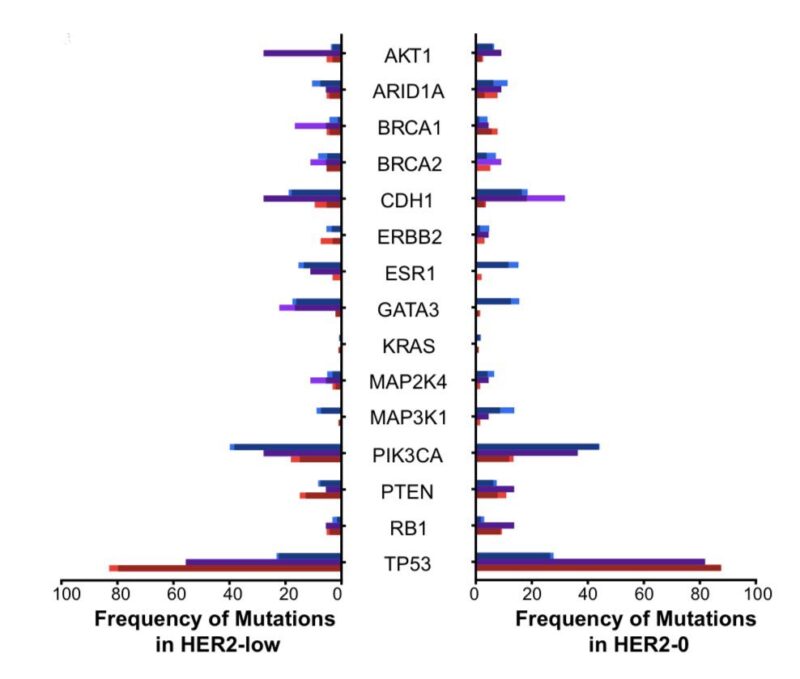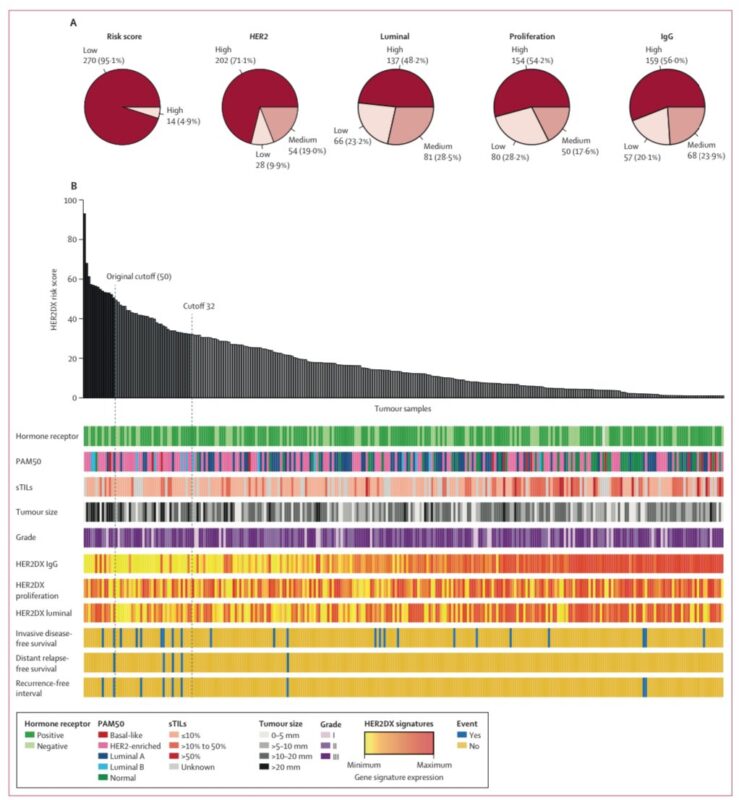
Paolo Tarantino: My 100th scientific publication
Paolo Tarantino, Fellow at Dana-Farber Cancer Institute, shared a post on X:
“It turns out that our review on 40 years of ADCs marks my 100th scientific publication.
What a journey!
I took this opportunity to look back and try connecting the dots of my scientific career.
Here’s 10 key articles that defined my research path over the past 5 years:
1. “HER2-Low Breast Cancer: Pathological and Clinical Landscape”
It’s mid-2018. HER2 is still defined the way it always was: positive or negative.
Two ASCO18 abstracts, though, show unexpected findings: the novel HER2 ADCs DS8201a and SYD985 produce high response rates in patients with HER2-low MBC.
Intrigued, I start brainstorming with my mentor at the time, Giuseppe Curigliano with several IEO co-residents and international experts.
We tracked back that HER2-low breast cancers accounted for half of all breast tumors, never really responded to traditional HER2 targeting, and were highly heterogenous.
We published the results of this brainstorming in Journal of Clinical Oncology in April 2022, accompanying the phase 1 data of T-DXd in HER2-low MBC.
Key contributors: several IEO co-residents, Giuseppe Curigliano.

2. “Evolution of low HER2 expression between early and advanced-stage breast cancer”
At this point, still little was known of HER2-low breast cancer. We reviewed our cases at IEO to understand its behavior.
We observed that HER2-low expression was an extremely unstable feature, with a third of the patients switching phenotype from HER2-low to HER2-0 (or vice versa) between the primary tumor and matched recurrence biopsy. Quite different behavior from HER2-amplified tumors.
We presented these findings at ESMO Breast20 and published them in the European Journal of Cancer.
Key contributors: Eleonora Nicolò, Federica Giugliano, Pamela Trillo, Giuseppe Curigliano.

3. “Prognostic and Biologic Significance of ERBB2-Low Expression in Early-Stage Breast Cancer”
Beside sparking my curiosity, the work on HER2-low connected me with a new terrific mentor: Sara Tolaney. In 2021 I moved to Boston and had the chance to lead the analysis of the large Dana-Farber’s Breast Oncology Center surgical database.
Key question: does HER2-low expression confer a distinct biology and behavior to eBC?
We looked at data from over 5000 patients, finding a continuous positive association between HER2-low and ER expression (surprising, give the opposite association in HER2-positive disease!).
Notably, however, despite conflicting data from some groups, HER2-low expression was not found to be prognostic in our dataset.
We presented these findings at ESMO Breast22 and published them on JAMA Oncology.
Key contributors: Quingchun Jin, Tari King, E. Mittendorf who lead this registry.

4. Thus, HER2-low was an unstable biomarker, associated with ER, with no clear prognostic role— but it also seems to predict response to T-DXd. Puzzling.
To try solving this enigma, we next decided to look at any genomic markers that may make HER2-low distinct.
By leveraging the Dana-Farber’s Breast Oncology Center EMBRACE database, we analyzed NGS data from over 1000 patients with MBC.
We found a significant correlation between HER2 IHC score and ERBB2 copy number, with a high rate of ERBB2 heterozygous deletions in HER2-0 MBC (more to come on this genomic alteration SABCS24).
Most other genetic alterations, however, were quite similarly distributed between HER2-low and HER2-0 MBC. Genomically, HER2-low and HER2-0 were not really distinct.
We presented these findings at SABCS22 and published them on Nature Communications.
Key contributors: Hersh Gupta, Nancy Lin, who leads EMBRACE andAstraZeneca who supported this analysis.

With dozens of conflicting publications rapidly accumulating on HER2-low BC, confusion surrounding this entity started arising.
In collaboration with ESMO, we decided to set up a panel of 32 international experts from 9 countries to develop consensus on key controversial HER2-low topics. It was published in Annals of Oncology in June 2023, coinciding with the beginning of ASCO23.
Among the many topics, it addressed the nature itself of HER2-low breast cancer: not a distinct entity, but part of a continuous spectrum, which may further evolve based on further clinical evidence.
It did eventually evolve, one year later, with the demonstration of the targetability of HER2 ultralow expression with ADCs (DB06).”
Key contributors: Giuseppe Curigliano, George Pentheroudakis.

6. “Optimizing the safety of antibody-drug conjugates for patients with solid tumours”
Given the rapid expansion of T-DXd and other ADCs for MBC, we soon realized the need for increased awareness on the toxicities of ADCs. Despite being targeted drugs, indeed, these were shown to harbor potentially life threatening side effects.
We reviewed the data available with 6 approved ADCs, trying to define the mechanisms and rationale for their toxicities, and to provide guidance on the mitigation of ADC toxicities.
The result was published on Nature Reviews Clinical Oncology in 2023.
Key contributors: Biagio Ricciuti, Sara Tolaney, Peter Sidaway for the editorial support.

Working with Sara Tolaney allowed my research on biomarkers and ADCs to expand beyond MBC. This led to some of the most rewarding research efforts of my life.
I had the chance to contribute to the final analysis of the APT trial, a study that has reshaped practice for patients with small HER2+ BC.
With 10 years of follow up, we found that the paclitaxel/trastuzumab (TH) regimen led to very favorable outcomes (10y iDFS: 91.3%), and that the novel biomarker HER2DX significantly predicted the risk of recurrence.
We presented these findings at SABCS23 and published them in The Lancet Oncology in early 2023.
Key contributors: Sara Tolaney, Noah Graham, Nabihah Tayob, Guillermo Villacampa, Aleix Prat, all the investigators and support from Genentech.

Could we treat these patients even better with an ADC? The ATEMPT randomized trial tested adjuvant T-DM1 and the TH regimen in 497 patients with stage 1 HER2+ BC.
Adjuvant T-DM1 proved to be extremely efficacious at preventing recurrences (5-year iDFS 97%), with less alopecia and better QoL than chemo. Similar to APT, the HER2DX signature confirmed to be prognostic in the stage I setting.
With the help of many collaborators, we also conducted extensive correlative analyses, which shed light on the complexity and heterogeneity of small HER2+ tumors.
We presented these findings at SABCS23 and published them in JCO in 2024.
Key contributors: Sara Tolaney, Nabihah Tayob, Translational Breast Cancer Research Consortium, Reveal Genomics, multiple external collaborators and support from Genentech.

9. “Prognosis and treatment outcomes for patients with stage IA triple-negative breast cancer”
Although we’ve learned to treat stage 1 HER2+ BC better thanks to APT/ATEMPT, no similar evolution has occurred for stage 1 TNBC, a very common disease (one third of all TNBCs) with no clear SoC treatment.
We decided to characterize the landscape of stage 1 TNBC in a large real world database (SEER, n=8601). We found that an increasing number of patients receive adjuvant chemo for stage 1 TNBC, with clear benefits for tumors larger than 10 mm.
(Could these patients benefit from adjuvant ADCs? Calling out all ADC companies out there: help us figure this out!)
We presented these findings at ASCO23 and published them in NPJ Breast.
Key contributors: Josè Pablo Leone, Julieta Leone, Carlos Vallejo.

10. “The Journey of Antibody–Drug Conjugates: Lessons Learned from 40 Years of Development”
The 5-year journey since my first HER2-low publication has brought many lessons. Among these, a key one: ADCs are complex drugs, and embracing such complexity is critical for unleashing their (huge) potential and improve patients’ outcomes.
My understanding of ADCs has benefitted tremendously of many chats with Raffaele Colombo, with whom I spent countless afternoons discussing of oncology, chemistry, future of oncology.
This would result in an ADC plenary session chaired by Elisabeth de Vries and Patricia LoRusso at the 2023 Triple Meeting, and, one year later, to a Cancer Discovery publication reporting the results of many group brainstormings on ADCs.
Key contributor: Raffaele Colombo, Elizabeth McKenna who strongly supported the article
This was like closing a circle, after publishing the HER2-low brainstorming 5 years earlier. And, hopefully, the opening of a new circle, one where we learn to use ADCs even better to treat cancer.

This has been a tremendous, fun, rewarding scientific journey.
I have too many people to thank to squeeze them into a twitter post.
Huge thanks go to all the patients that trusted us, enrolling on clinical trials and sharing their data for research purposes.
To all the co-investigators and to the teams at IEO and Dana-Farber’s Breast Oncology Center (including editors, e.g. Timothy Erick) who have made the articles described above possible.
And a heartfelt thanks goes to two outstanding mentors, Giuseppe Curigliano and Sara Tolaney, who, in complementary ways, have taught, inspired and supported me tirelessly over the past years.
Forever grateful.
End.”
More posts featuring Paolo Tarantino.
Dr. Paolo Tarantino, MD, is pursuing an advanced research fellowship at Dana-Farber Cancer Institute and Harvard Medical School, concurrently working towards a PhD in clinical research at the University of Milan.
His research focuses on exploring the HER2 oncoprotein, investigating the emerging HER2-low subgroup of breast tumors, and developing novel antibody-drug conjugates targeting every subtype of breast cancer. With a publication record exceeding 50 papers on breast cancer, he is recognized as a leading expert in the field.
-
Challenging the Status Quo in Colorectal Cancer 2024
December 6-8, 2024
-
ESMO 2024 Congress
September 13-17, 2024
-
ASCO Annual Meeting
May 30 - June 4, 2024
-
Yvonne Award 2024
May 31, 2024
-
OncoThon 2024, Online
Feb. 15, 2024
-
Global Summit on War & Cancer 2023, Online
Dec. 14-16, 2023
